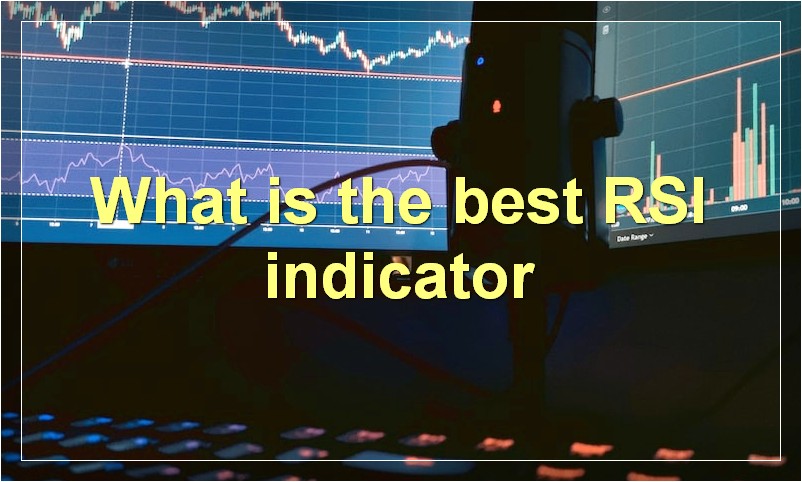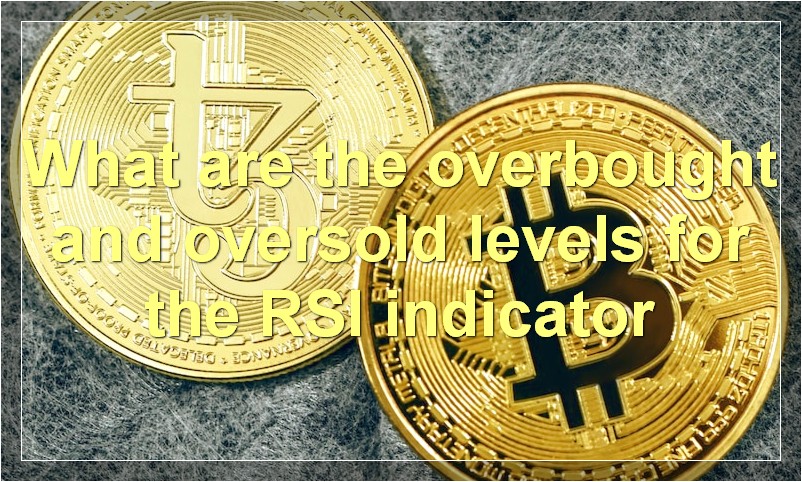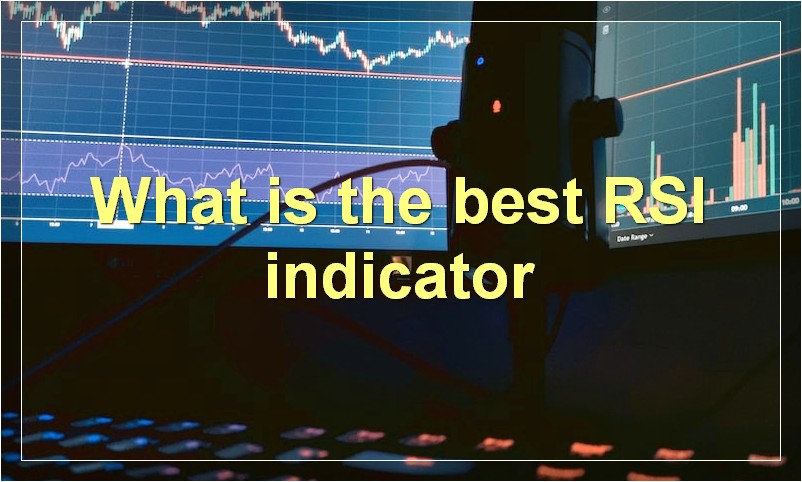If you’re an active trader, then you need to know about the RSI indicator. In this article, we’ll give you everything you need to know about this important tool.
What is an RSI indicator
An RSI indicator is a technical indicator that measures the relative strength of a stock or other security. It is a momentum oscillator that measures the speed and change of price movements. The RSI indicator is used to identify overbought and oversold conditions in the market. When the RSI is above 70, it is considered overbought, and when it is below 30, it is considered oversold.
What is the best RSI indicator

The best RSI indicator is the one that works best for you. Some people prefer to use a simple RSI indicator, while others may prefer a more complex one. There is no right or wrong answer, it simply depends on what you are looking for and what works best for you.
How do I use an RSI indicator
An RSI indicator is a technical indicator that measures the speed and change of price movements. It is used to identify overbought and oversold conditions in the market, as well as to spot divergences. The RSI can be used on any timeframe, but it is most commonly used on daily or weekly charts.
To use an RSI indicator, first identify the period you want to use. The default period is 14, but you can use any number of periods. Once you have selected your period, calculate the RSI by taking the average gain of the up days and dividing it by the average loss of the down days. The resulting number is then plotted on a scale from 0 to 100.
The most common way to interpret the RSI is to look for Overbought and Oversold levels. An RSI above 70 is considered overbought, and an RSI below 30 is considered oversold. These levels can be adjusted based on your trading style and preferences.
Another way to interpret the RSI is to look for Divergences. A bullish divergence occurs when the RSI forms higher lows even though the price is forming lower lows. This indicates that the selling pressure is weakening and a reversal may be imminent. A bearish divergence occurs when the RSI forms lower highs even though the price is forming higher highs. This indicates that buying pressure is weakening and a reversal may be imminent.
The RSI can be a valuable tool in your arsenal, but like all indicators, it should not be used alone. Be sure to combine it with other technical indicators and fundamental analysis to get a complete picture of the market before making any trading decisions.
What is the formula for the RSI indicator
The RSI, or Relative Strength Index, is a technical analysis indicator that measures the strength of a security’s recent price performance compared to its past performance. The RSI is calculated using a formula that compares the magnitude of recent gains to recent losses.
How do I interpret an RSI indicator
An RSI indicator is a technical indicator that measures the speed and change of price movements. It is used to identify overbought and oversold conditions in the market, as well as to spot divergences between the price and the indicator. The RSI is also a momentum oscillator, meaning it helps traders identify whether a market is moving up or down.
The RSI indicator ranges from 0 to 100, with readings below 30 indicating an oversold market and readings above 70 indicating an overbought market. However, these levels can vary depending on the market and the time frame being traded.
Divergences occur when the price makes a new high or low, but the RSI fails to confirm this move. This may be an indication that the current trend is losing momentum and could be about to reverse.
To interpret an RSI indicator, start by looking at the overall trend. If the RSI is above 50, then the market is generally moving up. If the RSI is below 50, then the market is generally moving down.
Next, look for divergences between the price and the indicator. A bullish divergence occurs when the price makes a new low but the RSI fails to confirm this move, instead making a higher low. This may be an indication that the current downward trend is losing momentum and could be about to reverse.
A bearish divergence occurs when the price makes a new high but the RSI fails to confirm this move, instead making a lower high. This may be an indication that the current upward trend is losing momentum and could be about to reverse.
Finally, look for overbought and oversold conditions. If the RSI is above 70, then the market may be overbought and due for a correction. If the RSI is below 30, then the market may be oversold and due for a rally.
Remember that these are just general guidelines and that it is important to use other technical indicators in conjunction with the RSI to get a more accurate picture of what is happening in the market.
What are the overbought and oversold levels for the RSI indicator

The Relative Strength Index (RSI) is a technical indicator that measures the magnitude of recent price changes to assess overbought or oversold conditions in the price of a stock or other asset. The RSI is displayed as an oscillator and can have a reading from 0 to 100.
The most common interpretation of the RSI is that values below 30 indicate an oversold condition, while values above 70 indicate an overbought condition. However, these values are configurable, and some traders prefer to use different levels.
For example, some traders may consider readings below 20 to be oversold and readings above 80 to be overbought. Others may use even more extreme levels, such as 10 and 90.
The important thing is to use levels that fit with your trading strategy and that you are comfortable with. You can always experiment with different levels to see what works best for you.
What are some common uses for the RSI indicator
There are many different ways that traders can use the RSI indicator to find opportunities in the markets. Some common uses for the RSI indicator include:
-Identifying Overbought and Oversold Conditions: The RSI indicator can be used to identify when a market is overbought or oversold. This information can be used to help traders make better decisions about when to enter or exit a trade.
-Spotting Trend Reversals: The RSI indicator can also be used to spot potential trend reversals. This information can be used to help traders take advantage of these reversals and make profits in the markets.
-Finding Support and Resistance Levels: The RSI indicator can also be used to find important support and resistance levels in the markets. This information can be used to help traders make better decisions about where to place their trades.
All of these uses for the RSI indicator can be helpful for traders in finding opportunities in the markets. By using the RSI indicator, traders can give themselves a better chance of success in the markets.
What are the drawbacks of using an RSI indicator
There are a few potential drawbacks to using an RSI indicator when trading. First, if a security is oversold, it doesn’t necessarily mean that it will rebound immediately. The security could continue to decline even after the RSI indicator signals that it is oversold. Second, divergences can occur between the price action of a security and the RSI indicator. This means that the RSI indicator might signal that a security is overbought or oversold, but the price action of the security doesn’t reflect this. Finally, false signals can occur with the RSI indicator, particularly in choppy market conditions.
Can the RSI indicator be used to predict future prices
The RSI indicator is a momentum oscillator that measures the speed and change of price movements. The RSI can be used to predict future prices by studying the past behavior of the indicator. When the RSI is above 70, it is considered overbought and when it is below 30, it is considered oversold. If the RSI is overbought, it means that the market is due for a correction and if it is oversold, it means that the market is due for a rally.
Is there a free RSI indicator available
There are many free RSI indicators available online, each with its own set of features. Some of the more popular free RSI indicators include the Wilder’s RSI, the Stochastic RSI, and the Relative Strength Index. Each of these indicators has its own strengths and weaknesses, so it is important to choose the one that best suits your trading style and needs.

